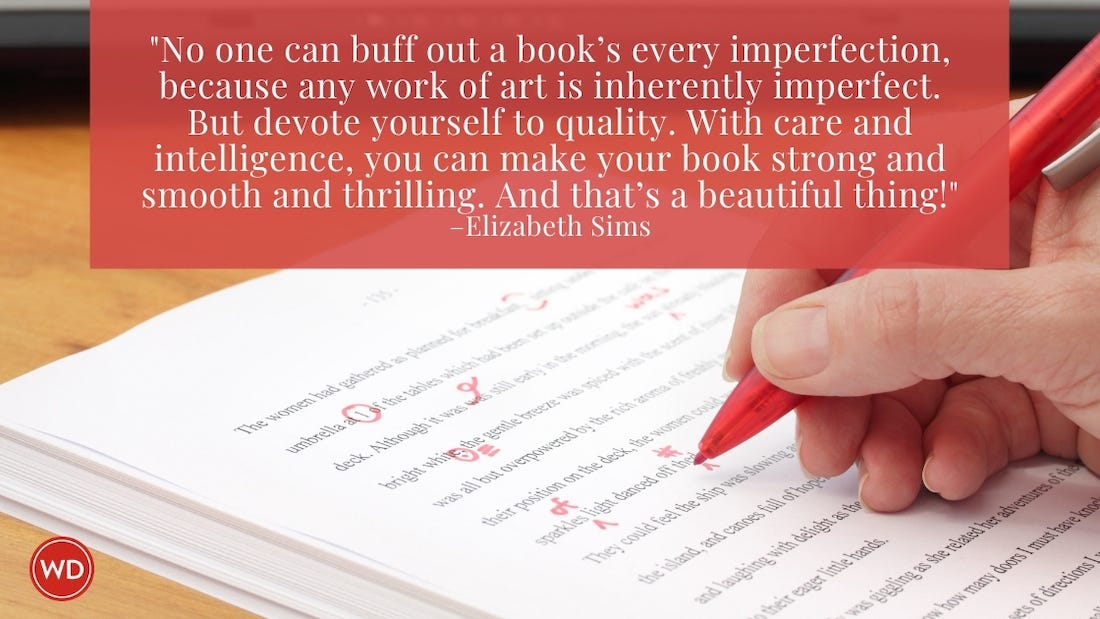Get off to a Strong Start
BY ELIZABETH SIMS Still looking for examples of great Chapter Ones? WD Contributing Editor Elizabeth Sims shares more of her picks.
In her article “8 Ways to Write a 5-Star Chapter One” in the January 2011 WD, contributing editor Elizabeth Sims shared her best examples of great Chapter Ones throughout history. Here are six more of her picks that we didn’t have room to include in print:
*********************************************************************************************************************************
This guest post is by bestselling author and writing authorityElizabeth Sims. She's the author of seven popular novels in two series, including The Rita Farmer Mysteries and The Lillian Byrd Crime series. She's also the author of the excellent resource for writers, You've Got a Book in You: A Stress-Free Guide to Writing the Book of Your Dreams, published by Writer's Digest Books. Click here to order now.
*********************************************************************************************************************************
• Native Son, Richard Wright (1940). A scene of a poverty-stricken urban family in their apartment is the last place you’d expect a primitive hunt to break out, but there’s a rat, and they must kill it, and they work together as a tribe to kill it and it’s exhausting, and from this we know that there are worse horrors to come, and they will be shown unflinchingly, and we must keep reading to know whether the human spirit will overcome, or not.
• One Day in the Life of Ivan Denisovich, Alexander Solzhenitsyn (1962). No chapter breaks occur in this grimly fascinating novelette; the beginning stretches to the end, unbroken, like the interminable days of the political prisoners in the Soviet gulag. The whole book is one terrific Chapter One. Brilliant.
• True Grit, Charles Portis (1968). In my opinion the greatest opening sentence in American literature: “People do not give it credence that a 14-year-old girl could leave home and go off in the wintertime to avenge her father’s blood, but it did not seem so strange then, although I will say it did not happen every day.”
• A Confederacy of Dunces, John Kennedy Toole (1980). The deep detail that Toole lavishes on his hero Ignatius J. Reilly’s appearance, clothing and mental outlook seems at first obsessive, until you realize that the character himself is an obsessive.
• Devil in a Blue Dress, Walter Mosley (1990). Starts right off with the narrator talking about race in the context of a man who comes into a place where he doesn’t seem to belong; we immediately know the author won’t pull any punches. Like Wright and O’Connor, Mosley cuts right to things that lesser authors fear to deal with.
• Deliverance, James Dickey (1970). Chapter One isn’t marked as such; it’s simply labeled “BEFORE.” Right there, your heart quickens.
--
For Sims’ complete list of great examples to inspire your own chapter one—plus her full article on 8 ways to make your all-important first chapter shine—check out the January 2011 issue of Writer’s Digest.
Elizabeth Sims is the bestselling author of seven popular novels in two series, including The Rita Farmer Mysteries and The Lillian Byrd Crime series. She's also the author of the excellent resource for writers, You've Got a Book in You: A Stress-Free Guide to Writing the Book of Your Dreams, published by Writer's Digest Books.









